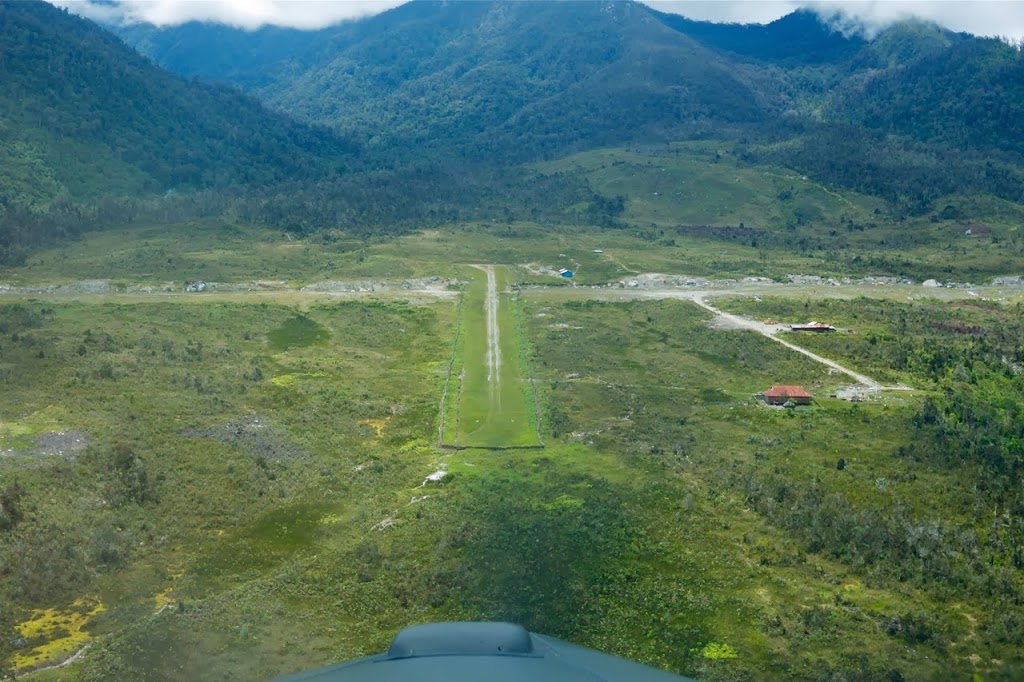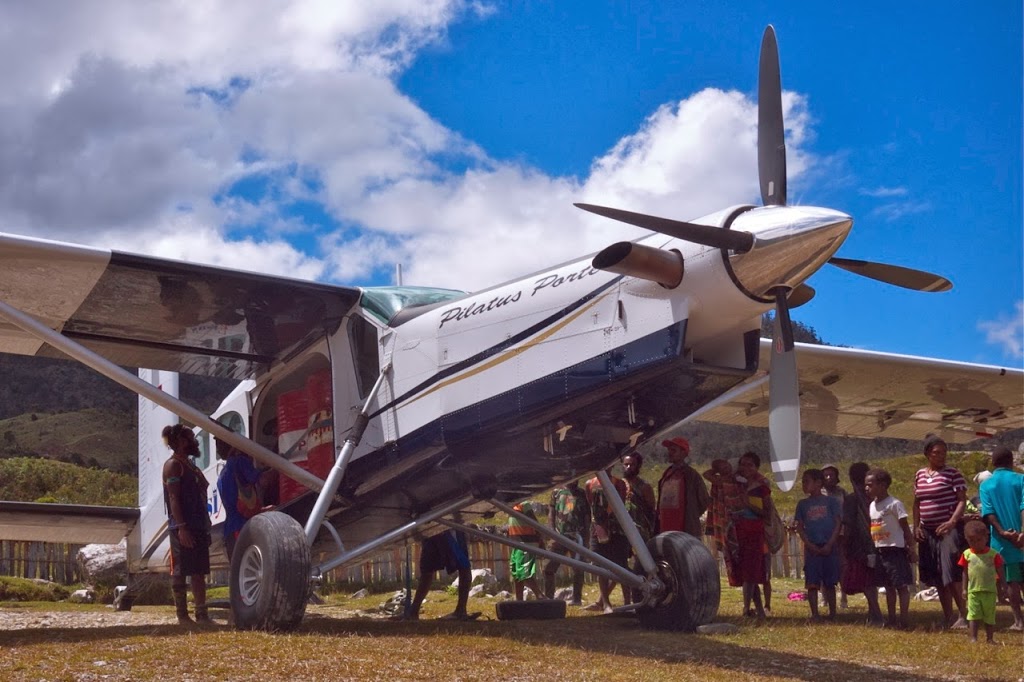 |
| Final approach into Sinak airstrip, Papua |
Runway statistics
Orientation: 08/26 (Landing 26, take-off 08)
Length: 650m
Elevation: 6700ft
Slope: 10% up-slope
Surface: course gravel/stones, very rough in places
 |
| Unloading fuel drums in Sinak, Papua |
Pilot notes
 |
| Departure from Sinak airstrip, Papua |
That quartering (tailwind) crosswind however tends not to ease up and one thing you don’t want to do with any aircraft, especially a large tailwheel aircraft like the Porter, is touchdown crooked. However, the long length and constant up-slope of Sinak allows you to fly up the airstrip for a touchdown nearer the top and perfectly straight. Landing deeper into the airstrip is actually of benefit anyway, as the lower parts of Sinak tend to be home to the larger rocks which can easily puncture the coke-can thin skin of the Porter’s horizontal stabiliser and elevator.
The departure is a lot easier and that tailwind on landing becomes a headwind that helps you get airborne a little quicker. I always like to pick the tailwheel up off the ground as early as possible by pushing forward on the control stick as soon as I start adding power. The ground roll doesn’t tend to be much but anything you can do to minimise the chances of punching a hole in the aircraft are worth doing.
I also tend to hold off retracting the flaps until well clear of that hill and, if necessary, use ground effect along the airstrip to accelerate the aircraft to a higher speed before starting the climb. The last thing you want to be doing is climbing away at too low a speed, encounter wind-shear and stall close to the ground. Once clear of the turbulence and terrain, I get the flaps up and climb away into the valley for the return back to Nabire or Timika.
 |
| Unloading cargo, Sinak, Papua |
Discover more from Matt Dearden
Subscribe to get the latest posts sent to your email.